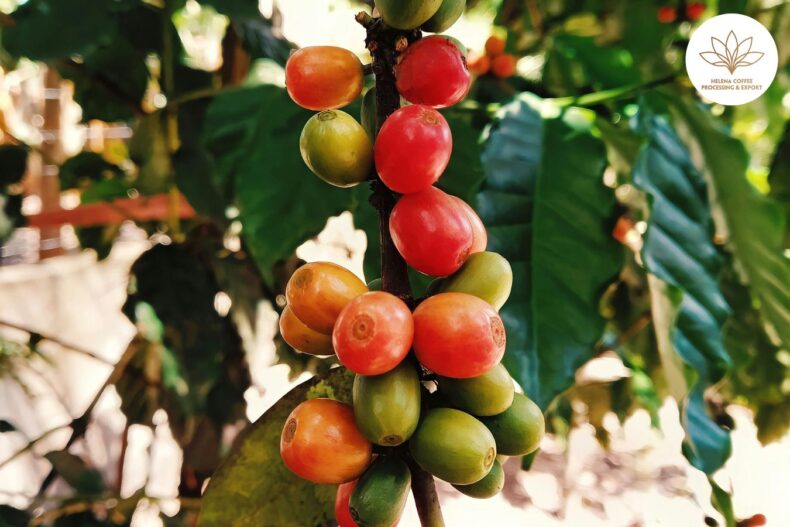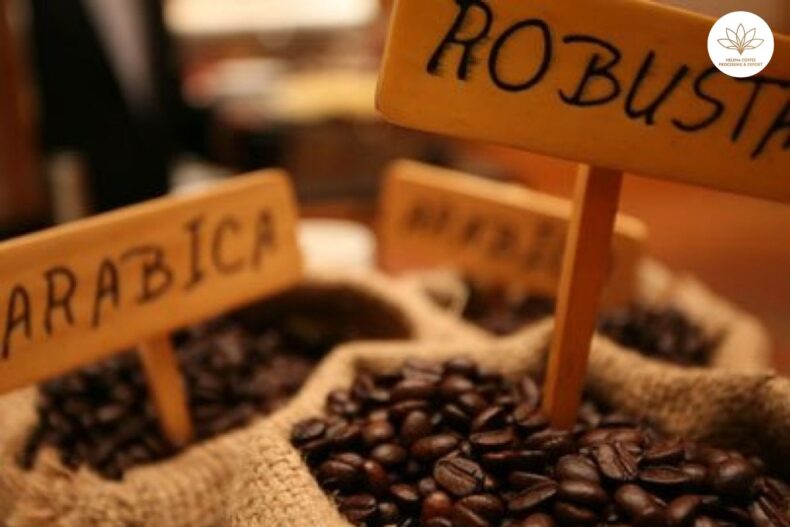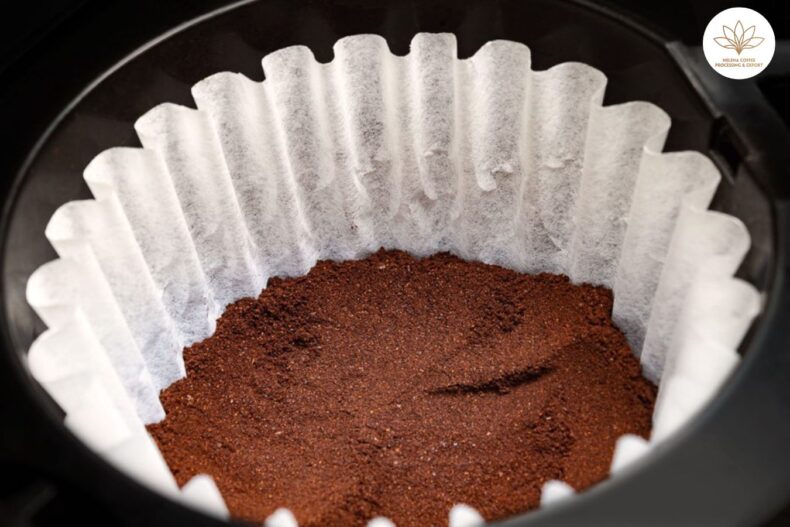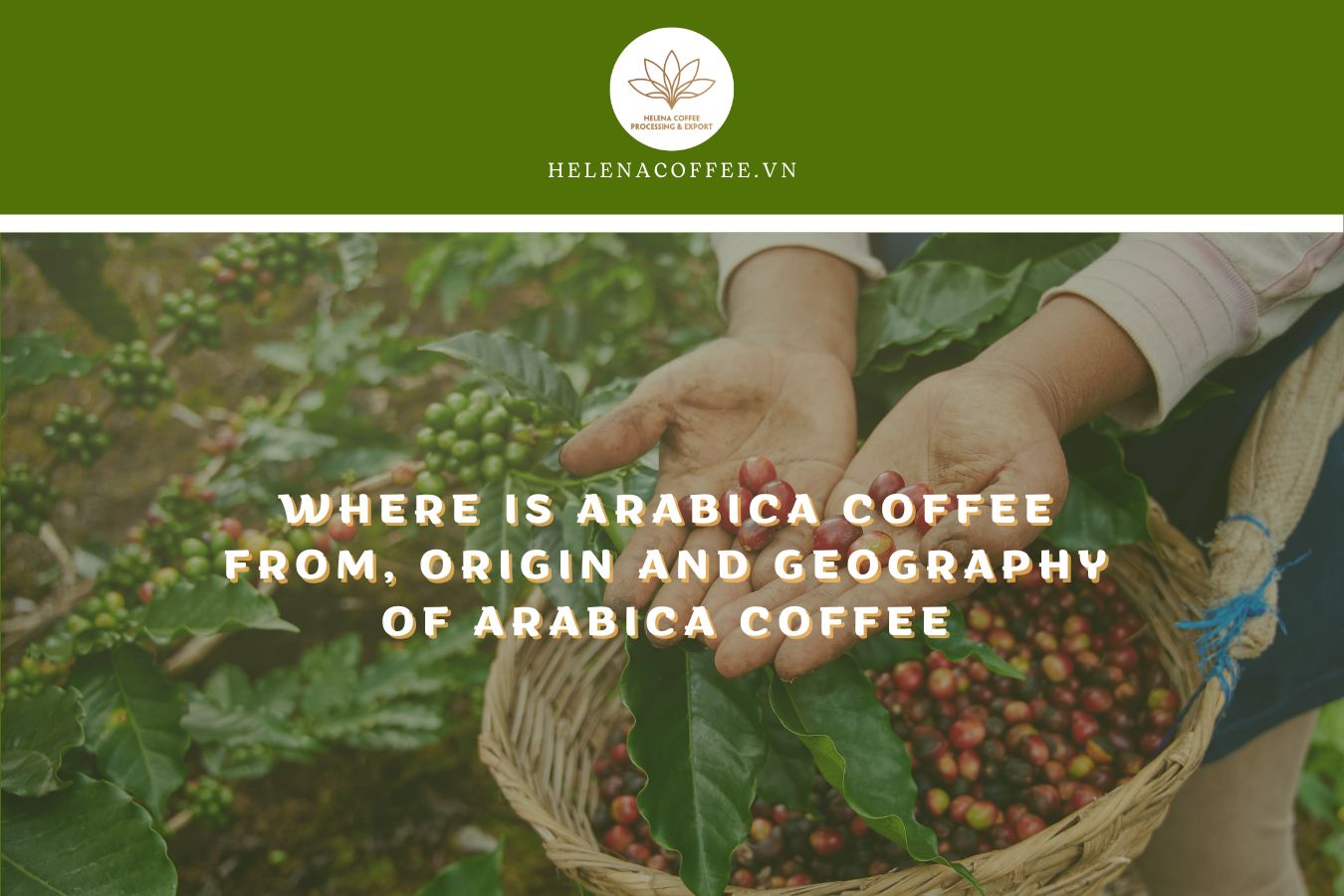
Arabica coffee, renowned for its exceptional flavor and aromatic qualities, has long captivated the palates of coffee enthusiasts around the world. where is arabica coffee from? As we embark on a journey to explore the origins and geography of Arabica coffee, we delve into the rich history and diverse landscapes that have shaped this beloved bean. From the misty mountains of Ethiopia to the high-altitude plantations of Central and South America, the story of Arabica coffee unfolds through the intricate tapestry of its geographical roots.
Join Helena Coffee in unraveling the mysteries behind the birthplace of Arabica coffee, as we trace its path through time and terrain, discovering the unique factors that contribute to the distinctive taste and character of this globally cherished brew.
Origin of Arabica
There is still some original Arabica coffee in Ethiopia today. Most of the Arabica varieties grown in the world are the result of hybridization. In the southwestern highlands of Ethiopia, people can find natural Arabica coffee trees in the tropical forest. They are often of high quality, and have been cultivated by humans once, but are very sensitive to pests and diseases.
In the 16th century, Arabica coffee was brought from Ethiopia to Yemen. Next, Arabica varieties in general (Bourbon and Typica varieties) were dispersed throughout the world in the 17th-18th centuries. That journey is specifically as follows:
- The Arabica Typica coffee variety was imported from Yemen to Batavia, also known as Jakarta, Indonesia. It was later brought back and planted by the Dutch in this empire, then widely grown in Central and South America.
- The Arabica Bourbon coffee variety was introduced later than the Typica variety, introduced from Yemen to Bourbon (Indian Ocean), then brought to Africa by the French in the 19th century.
Characteristics of Arabica coffee
The most reasonable altitude for Arabica coffee cultivation is from 1200 – 2200m. Arabica typically likes to live in high mountains. Suitable temperature is between 15-24 degrees Celsius
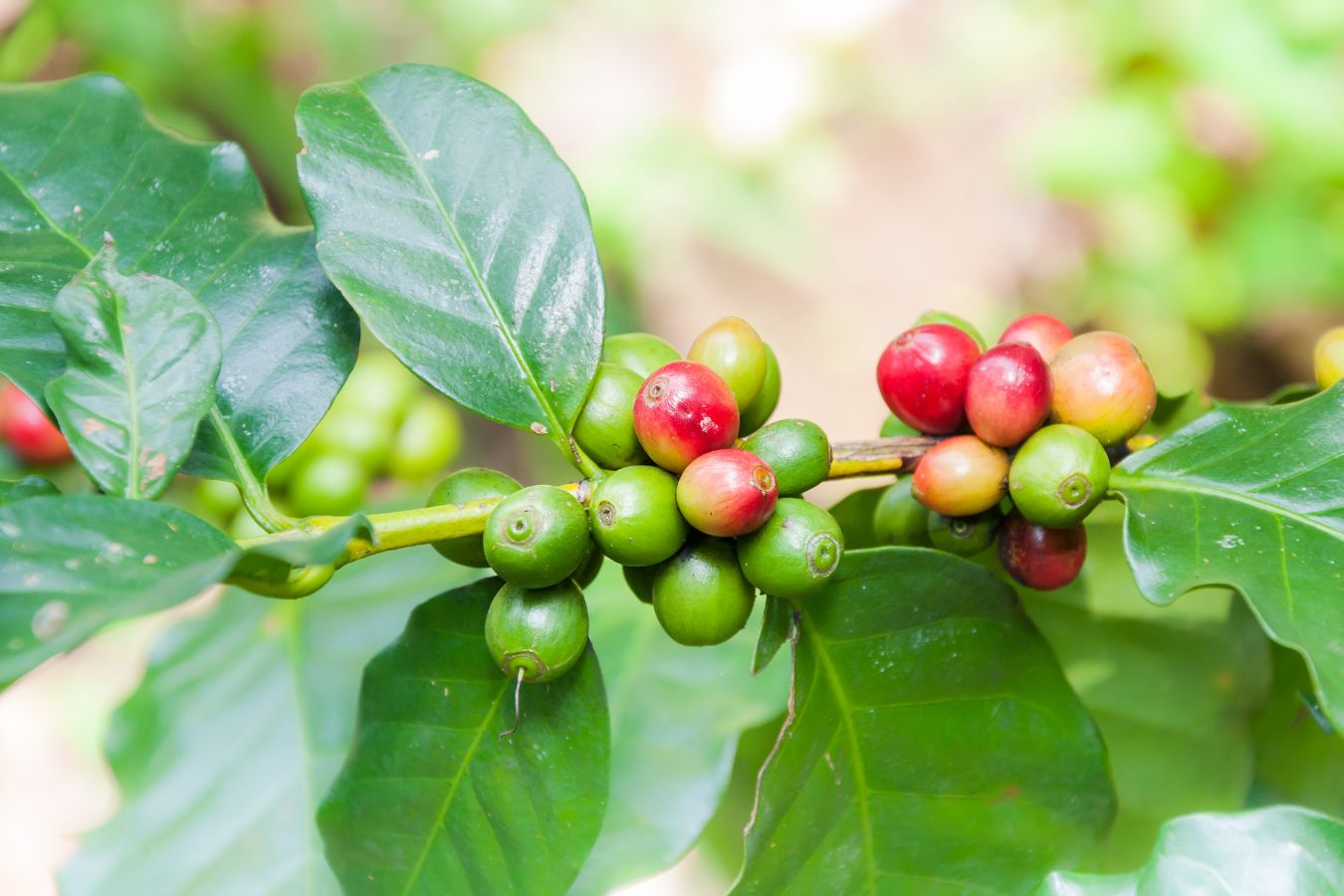
The tree is characterized by a small canopy, dark green color, and oval-shaped leaves. Mature trees reach a height of 2.5 – 4.5m. Tea coffee can begin to be harvested 3 to 4 years after planting. Coffee that reaches 25 years old is considered old and has no economic value. The longest lifespan of a coffee tree is 70 years
Distribution of Arabica coffee
It must be mentioned that in the early days of coffee production in the world, Arabica was the only coffee variety before the 19th century. The advantage that makes Arabica varieties selected is the ability to adapt to the environment, productivity, and quality. high quality. In 1920, Coffee Leaf Rust disease on coffee and tea trees occurred en masse throughout Africa and Asia. That is the main reason why farmers look for alternative varieties.
Indonesia is the pioneer country in growing Robusta coffee, while other countries replace it with other crops. Robusta coffee has higher yields and is highly resistant to CLR. However, Robusta coffee is not of lower quality. Therefore, from 1970 to 1980, many countries created other coffee varieties resistant to CLR.
From the first Bourbon and Typica varieties many different varieties have been created (natural mutations or by humans). According to statistics, there are currently 125 coffee varieties of the Arabica species distributed in many continents of Africa, Latin America, Southeast Asia, China, the Caribbean Islands, and the Pacific Ocean.
Research & classification of Arabica
In 2015, ICO statistics indicated that about 60% of coffee production came from Arabica varieties. Traditional varieties originating from native plant populations in Yemen as well as their mutations are considered high-yielding and represent “standard” quality. Few varieties like Laurina, Moka, or Blue Mountain are recognized for their outstanding high quality. Besides, wild or semi-wild Arabica plants originating from Ethiopia and Sudan such as Geisha and Rume Sudan have no commercial value because of their low productivity.
Here are some popular Arabica varieties
Arabica Typica
The Arabica Typica variety is known as The Typica Group according to WCR. This group has many sub-varieties, sub-varieties are cultivated scattered around the world, with names such as Criollo (Creole), Indio (India) or Arábigo (Arabica) or Blue Mountain (Jamaica) and Sumatra (Indonesia).
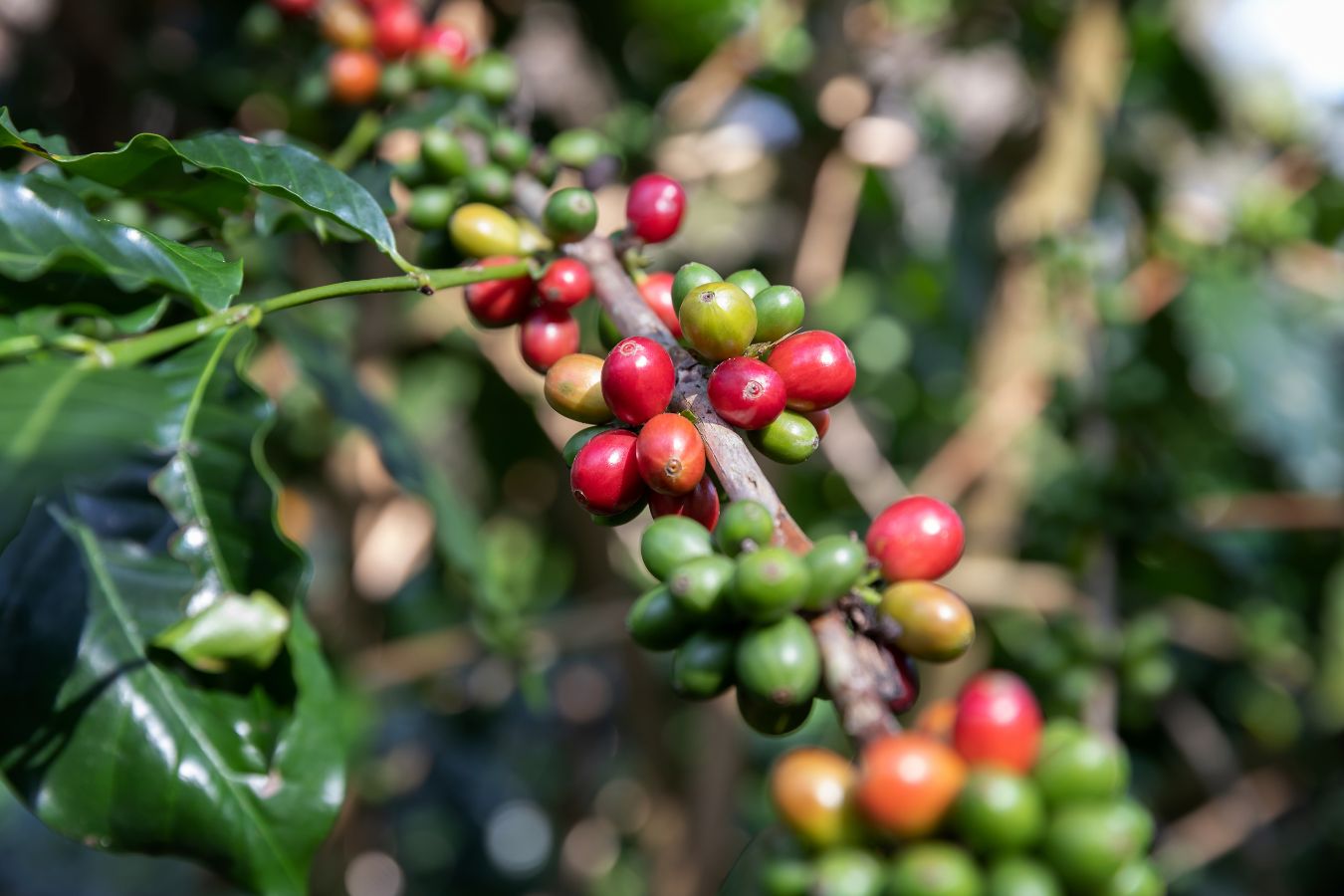
To this day, coffee production is mainly based on coffee plant varieties developed from the Typica and Bourbon varieties. Typically, most coffee plants in Latin America (South America) and Brazil (97.55%) belong to these two types.
Subvarieties of Arabica Typica
- Arabica Maragogype Coffee, A mutant of Typica, was first recognized in Brazil in 1870. This coffee variety produces large coffee cherries, however the distance between cherries (and berries and leaves) is very large. large leads to poor productivity.
- Arabica Pache – A natural mutation of the Typica variety involving a gene that causes the plant to grow shorter than normal. The variety was discovered in 1949 in Guatemala on the Brito farm in Santa Cruz Naranjo, Santa Rosa
- SL14 and SL34, both coffee varieties were selected in Kenya in the late 1930s at Scott Agricultural Laboratories. Recent genetic tests have confirmed that SL14 and SL 34 belong to the Typica genetic group, which are economically important coffee varieties in both Kenya and Uganda.
- Mibirizi from Rwanda, Likely the oldest variety in Rwanda, and still important to small coffee growers in Rwanda and Burundi. According to Belgian coffee historian Edmund Leplae, Mibirizi was brought to Rwanda from Guatemala in the 1910s. So it was most likely of Typica lineage, because Guatemala only grew 100% Typica coffee at that time.
In addition, there are still some other varieties that inherit the Typica gene and are little known such as: Nyasaland (also known as Bugisu local, Nyasa), Harrar Rwanda (also known as Harraghe)
Arabica Bourbon variety
Along with its brother Typica, Bourbon Coffee is the almost “ultimate” link in the connection of Arabica coffee varieties. The high quality correlation of these two coffee varieties has been a measure of quality throughout the history of the coffee industry. But some mutations have given Bourbon coffee a yield 20 – 30% higher than its Typica brothers.The first Bourbon coffee tree was planted by the French on the island of Bourbon (now Réunion) in the middle of the Indian Ocean around 1708.
Today Bourbon is present throughout the Latin American and African continents, growing best at high temperatures. 1,100 – 2,000 meters high and 20 – 30% more productive than its brother Typica.
Subvarieties of Arabica Bourbon
Caturra – A natural mutation of the Bourbon coffee variety, with a genetic change that causes the plant to be shorter than normal (dwarfism). From the initial natural mutation, the Caturra variety continued to be selected by the Brazilian Institute of Agronomy (abbreviated as IAC).
Villa Sarchi (also known as La Luisa or Villalobos Bourbon) like Catutta, is a natural “dwarf” mutation of the C. Bourbon variety. This variety was discovered in Costa Rica in the 1950s.
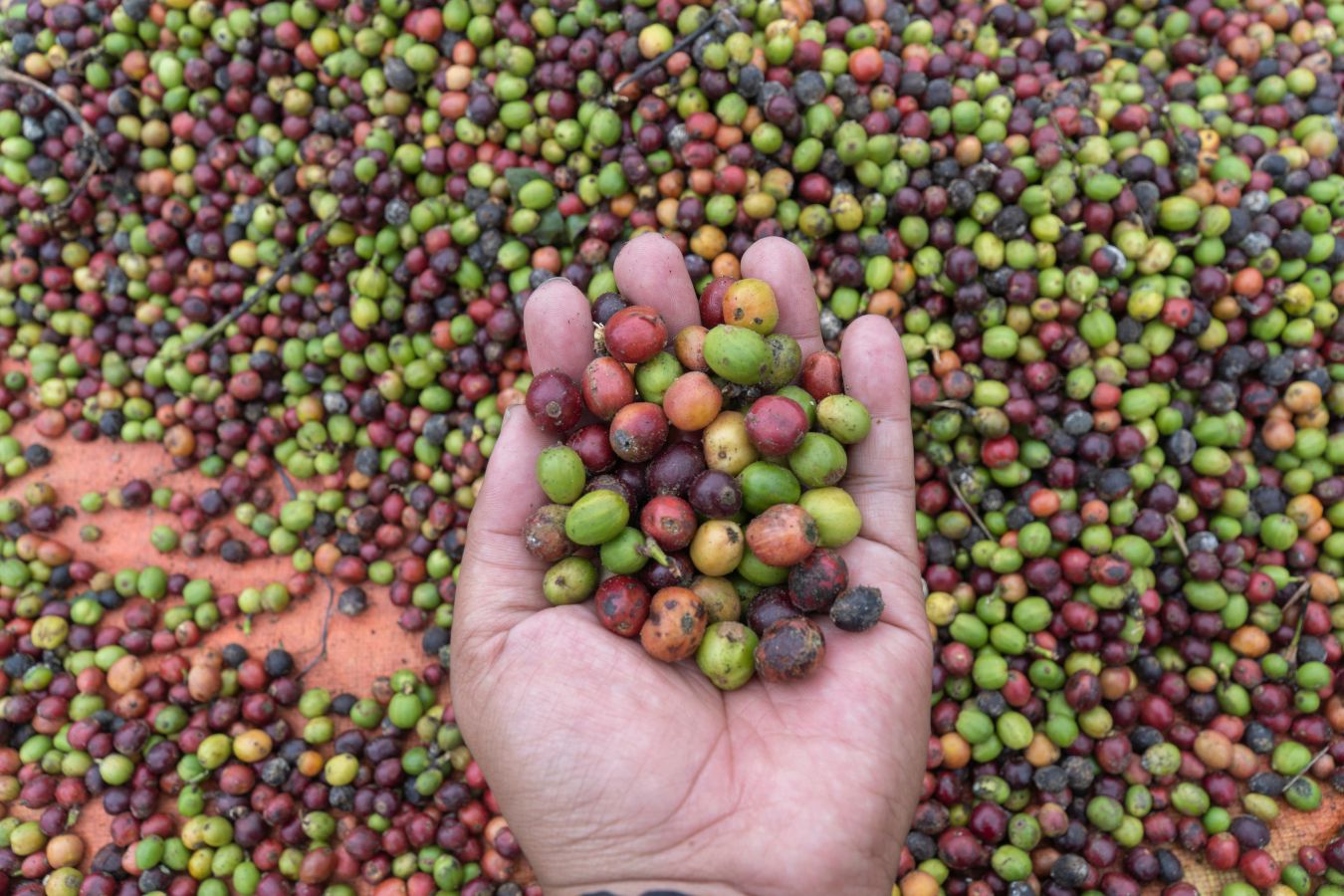
Similar to the above, Pacas is also a natural “dwarf” mutation of Bourbon, a variety discovered in 1949 on a farm owned by the Pacas family in the Santa Ana region of El Salvador.
Arabica SL28 is one of the most popular and highly appreciated Arabica coffee varieties in Africa. Since it was first cultivated in Kenya in the 1930s, SL28 soon became widely distributed in other areas of Africa (especially important in the Arabica growing regions of Uganda).
Bourbon itself still contains a very diverse “pedigree”, in addition to the popular varieties listed above, we also have Tekisic – selected by the Salvadoran Coffee Research Institute (ISIC) for nearly 30 years, from 1949 -1977 ; Venecia – selected by ICAFE in Costa Rica; K7 – Selected after five generations at Scott Agricultural Laboratories, Kenya in 1936..
Hybrid varieties between Typica and Bourbon
Mundo Novo is a natural hybrid between Bourbon and Typica, first discovered in Mineiros do Tiete, Sao Paulo, Brazil. This hybrid coffee variety was found in 1943 in the urban area of Novo Mundo (now Urupes). The Mundo Novo coffee plant is characterized by its tall stature, so this variety is widely grown in the areas South American country. However, this type of coffee is not widely grown by farmers because it is too tall and difficult to mass cultivate.
Arabica Catuai is a hybrid between Mundo Novo and Caturra that appeared in Brazil in the late 1940s. Catuai currently accounts for 50% of the coffee area in Brazil, and is widely used in Central America and typically Costa Rica and Guatemala. The characteristics of the Catuai variety are its small stature, easy care, characteristic yellow fruit, and higher yield than Bourbon.
Pacamara, is a cross between Pacas (of Bourbon) and Maragogipe (of Typica). Due to inadequate pedigree selection by the Salvadoran Coffee Research Institute (ISIC), Pacamara is unstable from one generation to the next.
Above are some popular Arabica coffee varieties up to the present time. Helena Coffee will constantly update the latest varieties – Don’t forget to share & contribute your opinions, so that more people can better understand the Arabica coffee variety!
Read more:
